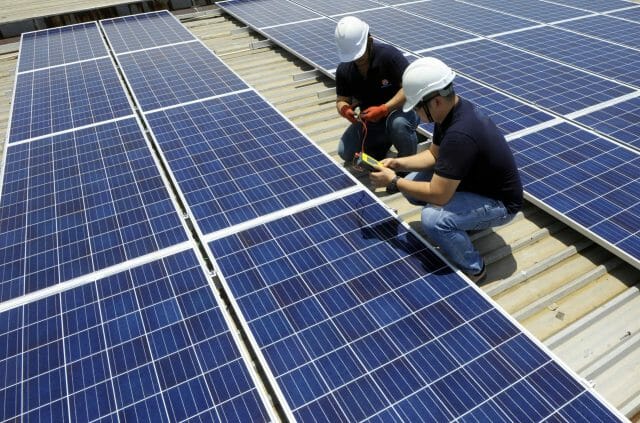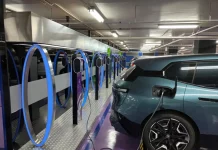By Poovenraj Kanagaraj
Founded in 2012, Solarvest started off with four employees and a vision to create a world where clean energy would be accessible to many.
The company since then grew in leaps, having started with installing rooftop solar panels for residential and industrial areas to becoming a leading solar turnkey engineering, procurement, construction and commissioning (EPCC) provider.
“We were among the first batch of grid-tied solar power installation providers that had obtained the certification from SEDA, ISPQ and GCPV,” says Davis Chong, group chief executive officer of Solarvest Holdings Berhad.
In addition, Solarvest also helps solar investors to build solar photovoltaic systems (solar PV) from scratch. Recently listed on the ACE Market of Bursa Malaysia, Solarvest is the only pure play solar player to be listed on the bourse.
But what are the factors behind this growth spur?
Growth and success
“When we first started in 2011, we were mainly in the residential segment and progressively included in the Commercial and Industrial (C&I) segment,” says Davis.
Projects initially flowing in from the two segment came on a slower pace, as Davis points out that Malaysians were not familiar with solar energy at the time.
However, after much promotion by the local authorities with the introduction of tax exemptions and incentives for corporates, as well as the Net Energy Metering (NEM) programme, the company had begun to see higher uptake from the C & I segments.
“Meanwhile, our venture into the Large-Scale Solar (LSS) segment began in 2017 when the Government launched the LSS schemes,” Davis tells Business Today.
He further added that he and his team had participated in various LSS projects under the LSS 1 and LSS 2 scheme.
The company had recently completed all three of their LSS 2 projects. The Asia Meranti Solar Kamunting Plant (12.7 MWp) saw the company’s participation to be the first to achieve commercial operation date (COD).
The Asia Meranti Solar Kampar Plant and Kinta Plant projects the company was involved in respectively saw completion one month ahead.
“Over the years, we installed approximately 280 MWp capacity of solar PVs across residential, commercial and industrial properties, as well as LSSPV as of March 2020,” Davis says.
Star pix by ASRI ABDUL GHANI / The Star / April 11, 2017.
He further adds that the residential and C&I segments are major segments for the company and accounts for approximately 80 percent of their total orderbook of RM 146.6 million as of Dec 31, while the remaining 20 percent of their orderbook comes from the LSS farm projects.
However, Solarvest hasn’t just stopped there. The company had in recent weeks bagged two new contracts in the Philippines.
“The first project is for the development of solar PV systems at 10 designated buildings, with cumulative capacity of 816.2 kilowatt peak (kWp), located at the University San Agustin, Iloilo City, Philippines.
“Under the second solar project, Solarvest will develop 377.52 kWp solar PV systems for Bulihan Industrial Park located at Bulacan,” Solarvest said in a statement.
The company had also secured a rooftop solar project worth RM 29.2 million from Petronas-linked NE Suria Satu Sdn Bhd (NESS), involving 15 stores of a hypermarket chain here.
Demand continues to see traction
According to Davis, the company continues to see increasing demand in the country, especially for the LSS and C&I segments.
“The growth of our business is very much dependent on external factors such as government policies, regulatory and accessibility to project financing,” Davis shares with Business Today.
While the LSS projects have been a booster to the industry however Davis says the next key growth area would be the C&I segment. Davis believes that is more accessible and requires lesser financial commitment as compared to LSS projects as there are less complexities and no need for costs of land acquisition.
“Additionally corporate investors will be able to enjoy incentives and tax allowances such as extension of GITA until the year 2023 and extension of GITE with a 70 percent income tax exemption of up to 10 years,” Davis highlights.
The Green Investment Tax Allowance (GITA) was announced in 2013 serving as an incentive for the purchase and use of green technology in the country.
GITA is applicable for companies that undertake qualifying green technology projects for business or own consumption.
In 2018, 175 renewable energy (RE) and 55 energy efficiency (EE) projects through GITA were approved, attracting total investment values of RM 3.0 billion and RM 139.1 million respectively.
Meanwhile, with both domestic and foreign investors partaking in GITE, there were a total of 14 projects for green services with a total investment of RM 150.8 million.
Davis also points out that he has seen more participation from the private sector such as poultry farms, supermarkets and manufacturing industries where they have a larger rooftop space for solar PV installation.
“Aside from that, government-linked companies (GLCs) are also exploring to invest in solar energy as it gives them a stable and long-term income,” Davis states.
However, while demand last year proved to be healthy, the arrival of the Covid-19 outbreak had affected the traction the industry was picking up.
Projects had experienced a slowdown to the point of having to stop everything temporarily. Davis says the ongoing issue will hurt several industrial players and may even see companies close down.
The Movement Control Order (MCO) had recently been extended up to May 12.
Increasing growth sees increasing challenges
“Domestic operating landscape is increasingly competitive with more players entering the solar industry, given that the Malaysian government is introducing more incentives to spur demand for clean energy,” Davis tells Business Today.
He goes on to add that competition comes from both the international players and local ones as more industry players are hoping to get a slice of the growing market.
“Due to that, an unhealthy price war arises, as evidenced in the LSS3 bidding where the lowest bid price was at 17.8 sen per kWh was below the reference price of 32 sen, which is unsustainable,” the chief executive officer highlights.
Another key challenge that rose in 2019 was the accessibility of finance options to meet the financial obligations for solar projects. In order to address this, Solarvest have been working with various external parties such as financial institutions and insurance providers to expand the ecosystem of their solutions.
Collaborations had included a partnership with the United Overseas Bank (UOB) for the U-Solar Programme as well as a partnership with Anora & Allianz General to provide insurance packages for solar projects.












